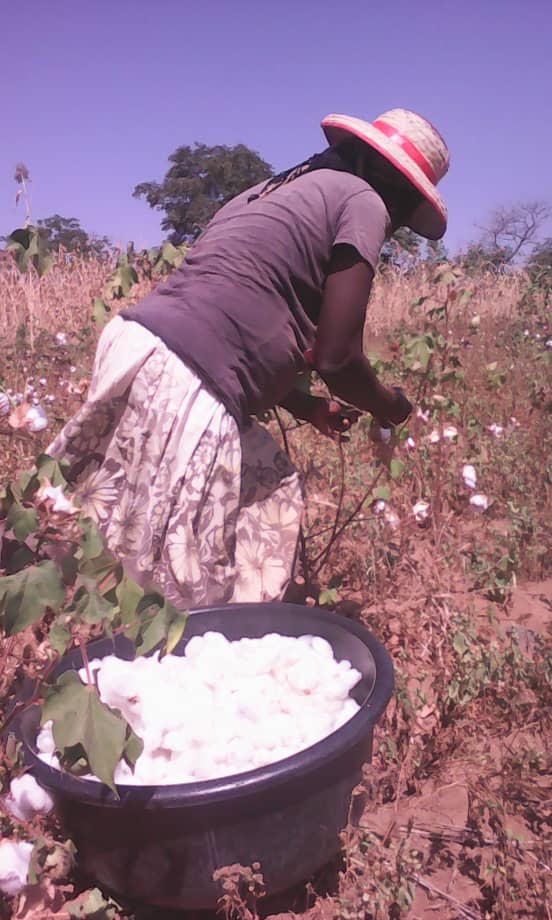
The smallholder uses little or no external inputs, thus his production is highly influenced by the prevailing soil and other environmental conditions. However he often plants his crops in mixtures (that is multiple-cropping as against mono-cropping in conventional agriculture); a practice that offers some measure of cross-protection to the crops sown. To produce at optimum, crops are protected against soil-borne pathogens that can attack the plant and reduce performance. Such attacks are mitigated or prevented in conventional agriculture through the use of seed treatment chemical (a practice not common with smallholders although is recommended). This exposes the crop to a range of pathogens that affect the crop from seedling stage to maturity and can seriously reduce production, except when sprayed with chemicals to protect the crop.
The cotton crop is particularly susceptible to such attacks that the production of the crop is heavily dependent on chemical protection, thus making it unattractive to smallholders as production cost is increased. The spraying of Hyptis suaveolens (L.) Poit; [African bush tea], has been used previously to control pests and diseases in cotton production (Odion et al., 2013) as the plant has been shown to possess antifungal, antibacterial, and antiviral effects; and is used in the control of mosquitoes by the natives. The plant grows during the raining season and is thus readily available to the farmers. Spraying the cotton crop with extract from the plant from seedling stage through vegetative, flowering, and pod formation will protect the crop from diseases and pests and improve production. This was demonstrated in 2020 growing season, in which most cotton crops failed due to the heavy rainfall experienced resulting in the probable high build up of pest and diseases in the area. The procedure is thus a panacea for improved production under organic agriculture production systems as it can be used to treat soil pathogens as well as pests while preserving biodiversity in the environment. It can be used as a prophylactic for all crop production resulting in the general improvement of production among this group of farmers.

